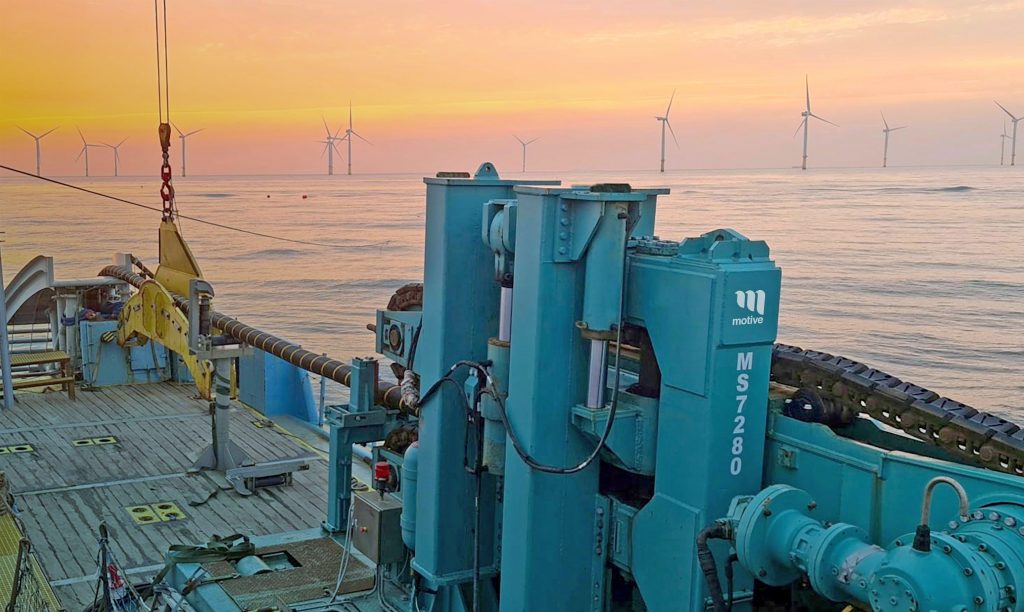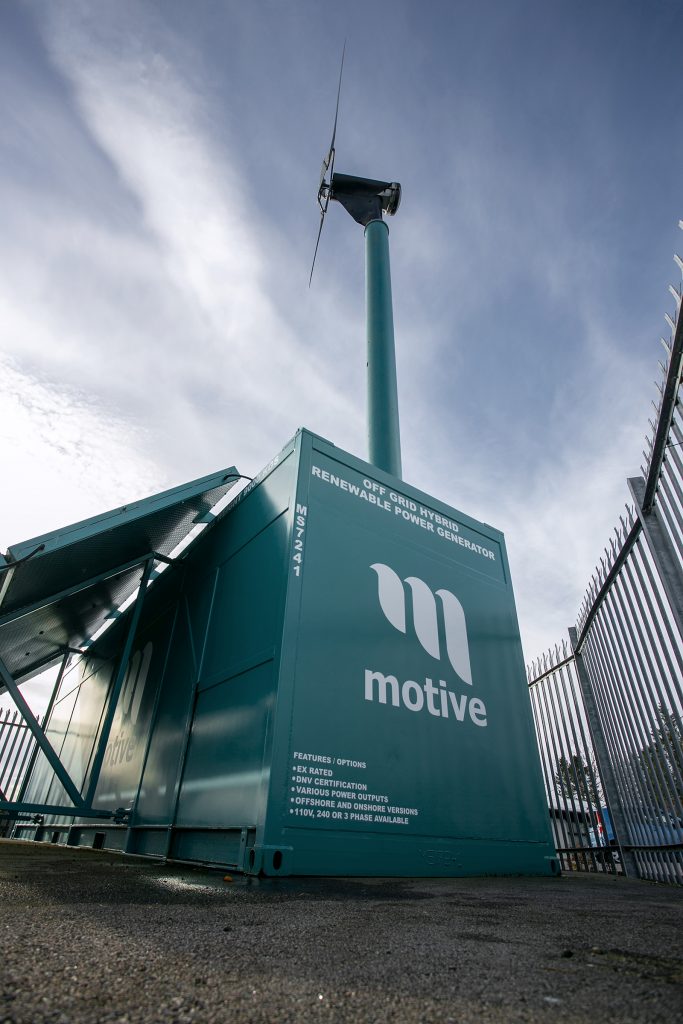The IEA predicts we must build more than 70 GW of new offshore wind capacity each year until 2030 to achieve net zero, and we have yet to address the enormous expansion in global logistics capabilities that this will require. With 80 percent of the world’s offshore wind resources lying in deep waters, we will need the capability to make and maintain much larger floating wind farms, longer cable connections and bigger turbines. An expansion in our maintenance and decommissioning capabilities will also be important to maintain, repair, repower, and replace offshore wind across its lifecycle.
Amidst rising inflation, energy price rises, and material shortages, constructing large new installation and operations fleets and equipment could produce soaring logistical costs. The accelerating adaptation of oil and gas resources for offshore wind could offer a significantly faster, leaner, and lower cost route to renewable expansion. Motive, along with several other pioneering companies, are already transitioning fossil fuel vessels, equipment, and skills into offshore renewables and harnessing smart technology to reduce demands on logistic fleets. Yet, achieving this effectively requires the international harmonization of certifications and standards across offshore energy and the digital transformation of a traditionally conservative offshore logistics industry.

The looming logistics capacity crunch
Global installation, inspection, and maintenance fleets will need to support an average 18 percent annual growth in offshore wind until 2030 and 2,000 GW of new capacity by 2050. The expansion of offshore wind into deep-water sites with stronger winds will require fleets capable of installing and maintaining longer cables, larger platforms, and turbines. For example, average turbine sizes are expected to balloon to 20 MW by the end of the decade. We will also need a major increase in maintenance capacity to address persistent challenges such as corrosion and fatigue and the ongoing annual decline in output across many wind farms.
At the other end of the lifecycle, much of the new offshore wind estate is expected to reach retirement age in 20-25 years and 3.5 GW is already due to expire in 2035, which will entail a parallel increase in decommissioning capabilities. This comes as international offshore wind logistics chains are already reaching the limits of their current capacity.
Yet, a major expansion of logistics fleets and equipment could add further costs to the wind industry amidst post-COVID materials shortages and energy price rises. The industry faces the additional cost of recruiting and training a new skills base to support offshore wind expansion amidst a global energy talent shortage. This could imperil the energy transition at a time when soaring supply chain costs and vanishing subsidies are already causing offshore wind manufacturers to retreat from markets, reduce production and hike prices.
A ready-made resource for offshore renewables
The accelerating energy transition is enabling a parallel transfer of logistical capabilities from fossil fuels to offshore renewables that could avert the need for excessive new construction. The many synergies between offshore oil and gas and offshore wind mean oil and gas logistical fleets, equipment and expertise form a ready-made resource for offshore wind.
For example, the vessels and techniques used to install oil and gas flowlines could be adapted for electrical cable laying. Jack-up construction vessels for oil and gas platforms can be adapted for offshore wind platforms. We are laying the cables for all of Taiwan’s new offshore wind projects without building a single new installation vessel by refitting chartered vessels with rental equipment. We are now helping many renewable firms rapidly retrofit old multi-purpose vessels for offshore wind by adding a diverse array of equipment from high-capacity winches to spoolers. Much of this equipment has itself been repurposed from offshore oil and gas to renewables. This demonstrates how a circular economy of logistical assets could reduce the cost and carbon emissions of expanding offshore wind.
Similarly, 90 percent of offshore oil and gas workers have skills that are transferrable to offshore wind, and these workers could be seamlessly transitioned across, dramatically reducing the cost and time to develop a new renewable workforce. For example, Motive Offshore Group recently upskilled all its technicians and engineers from oil and gas to renewables.
The digital transformation and automation of legacy logistics equipment could also enhance the efficiency and performance of existing hydraulic equipment to support bigger offshore wind platforms and turbines. A recent Knowledge Transfer Partnership between the University of Aberdeen and Motive produced a device that can digitalize and optimize any hydraulic equipment in any environment for new applications such as offshore wind.
The data monitoring and acquisition device can be fitted to any subsea equipment in any environment, allowing legacy hydraulic equipment to be remotely monitored, managed, and even automated. It enables remote real-time monitoring of more than 50 parameters from equipment usage to fuel efficiency, helping find opportunities to extract extra performance from existing equipment. By enabling remote and predictive maintenance of logistics equipment, it could also significantly reduce operations equipment and manpower requirements across offshore wind estates. By enabling the accurate simulation and calibration of legacy hydraulic tools or processes for new applications, the innovation could also help optimize everything from winches to spoolers for new requirements such as larger turbines or longer cables.
 Toward a new model of offshore wind expansion
Toward a new model of offshore wind expansion
The required expansion of offshore logistics risks adding further costs and delays to the energy transition amidst increasing supply chain costs, raw material shortages, and shrinking subsidies. The offshore wind industry needs to adopt a more efficient model of expansion. This will require the digitalization and optimization of legacy logistics chains for new applications. We will also need to see greater harmonization of industry-wide certifications and standards to smooth the transfer of skills and tools from fossil fuels to offshore wind. This could provide a far faster, more efficient, and cost-effective route to net zero.
























